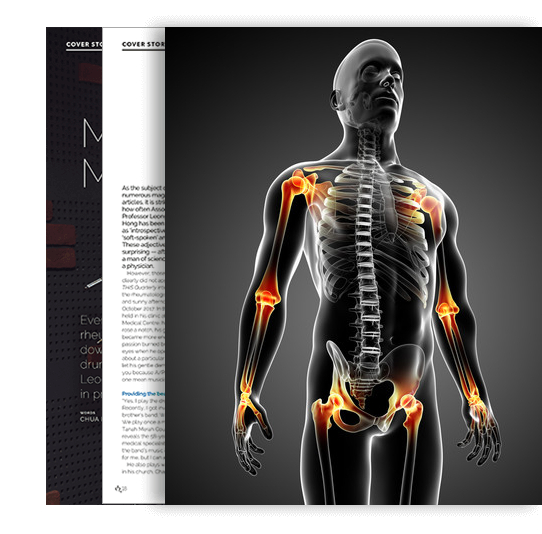Soft tissue rheumatism (STR) in particular refers to problems arising in the structures around joints, for example in the tendons, ligaments and muscles. Common conditions such as tennis elbow, policeman’s heel (aka plantar fasciitis), carpal tunnel syndrome and fibromyalgia are all cases of STR, and are explained in more depth later in this article. Rheumatism should not be confused with arthritis, which refers to a problem involving the cartilage between bones. The cartilage can either wear out from ageing or overuse, resulting in a condition called osteoarthritis. It can also become swollen, red and warm.
One of the main causes of STR is overuse of the joint that is affected. This explains tennis elbow, which is a direct result of playing too much tennis. However, the phenomenon is not exclusive to sports – repetitive use of any joint can result in the condition. Trigger finger is another common condition. It occurs when a patient uses their hands repetitively after starting a new hobby that requires intensive dexterity. The tendons that pull the finger down into a clenched fist have tendon sheaths. When overused, the sheaths become inflammed and the tendon which usually moves freely in the sheath gets stuck. When this happens, there is a click whenever the patient opens his fist to straighten the fingers or the thumb.
Carpal tunnel syndrome happens when the nerve that runs under the wrist is squashed. Patients end up with numbness and tingling in their hands, especially on the side nearer the thumb. Plantar fasciitis or “Policeman’s heel” earned its name because it was identified in policemen who had to walk long distances while patrolling the streets, wearing uncomfortable shoes. Nowadays, it affects many people who need to be on their feet all day, for example nurses, teachers and so on.
The term fibromyalgia comes from the Latin fibro, meaning “fibrous tissues”, Greek myo, “muscle”, and Greek algos, “pain”. The term literally means “muscle and connective tissue pain”. It is a condition characterised by chronic widespread pain in every part of the body and allodynia (pain caused as a result of an action that does not usually feel painful, for example putting pressure on one’s arm). Fibromyalgia symptoms are not restricted to pain, meaning that fibromyalgia syndrome is often used to describe the condition. Other symptoms include extreme fatigue, disturbed sleep and stiff joints. Some patients may also report difficulty swallowing, bowel and bladder abnormalities, numbness, tingling and cognitive dysfunction. It is estimated that fibromyalgia affects apparoximately two to four percent of the population, with a femaleto- male ratio of around 9:1. Diagnosing fibromyalgia requires exclusion, meaning that the doctor must make sure there is no other medical problem causing the aches.
Patients suffering any of the above conditions can be confident that a combination of medication and altered behaviour can aid their situation. Medication can be prescribed that will relieve pain, reduce muscle spasm, restore good sleep and adjust the patient’s brain response to pain. If a satisfactory response is not achieved, a local injection of steroids may be needed. Weight control and adjustment of footwear is important for plantar fasciits. Some patients benefit from surgery such as releasing the compressed nerve in carpal tunnel syndrome or freeing the tendon in trigger fingers. To gain maximum effect, these treatments must must be combined with a modification of activity, in particular by not overusing the affected areas. Patients should avoid engaging in any activity continuously for more than two to three hours.

